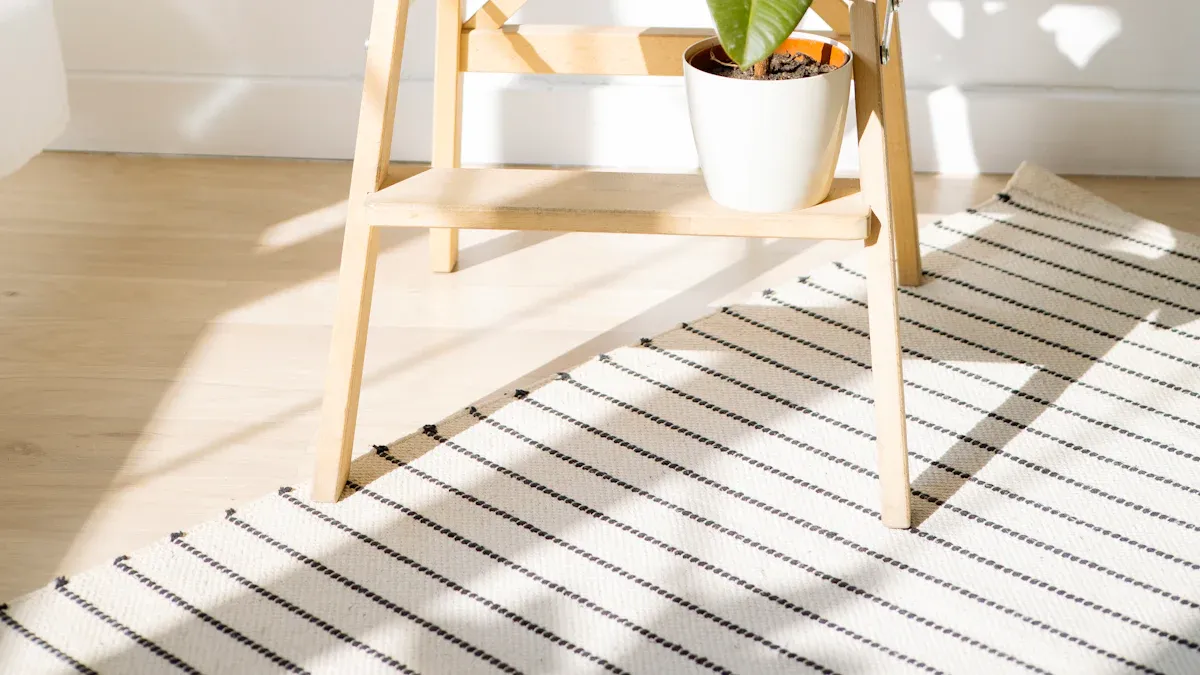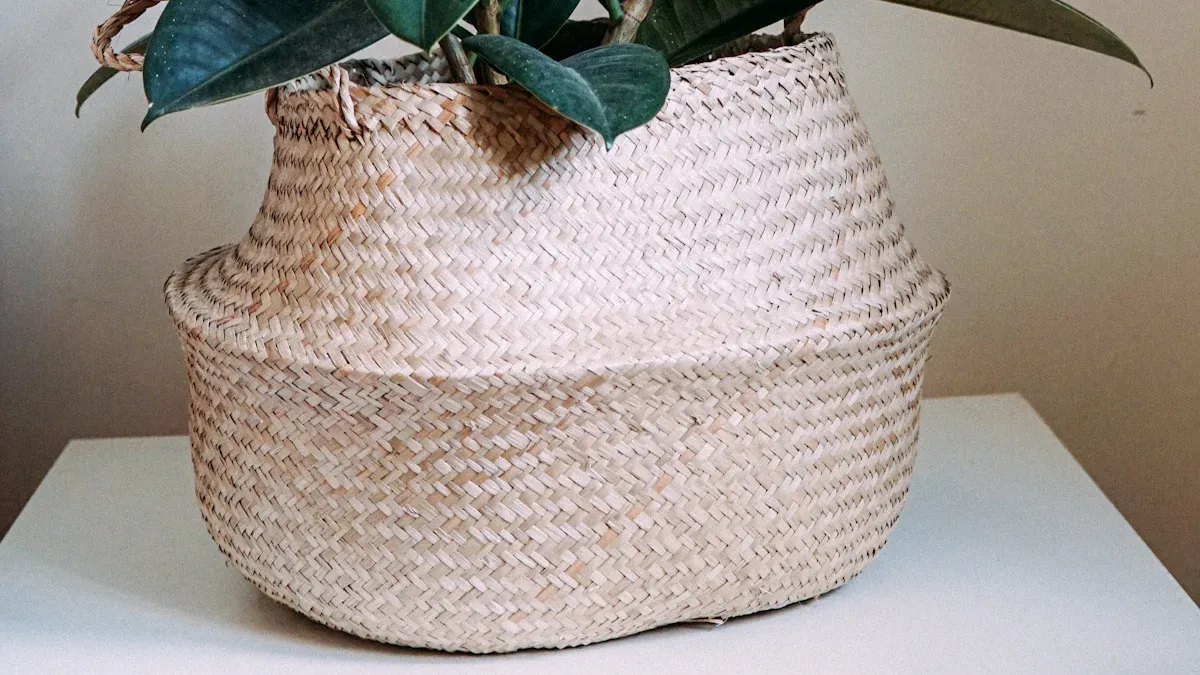Views: 0 Author: Site Editor Publish Time: 2025-03-16 Origin: Site








 Have you ever noticed how a walk in the park or sitting by a garden instantly lifts your mood? That’s the magic of biophilic design. It’s all about bringing nature into the spaces where we live, work, and heal. By using natural light, greenery, and organic materials, this approach creates environments that feel alive and comforting.
Have you ever noticed how a walk in the park or sitting by a garden instantly lifts your mood? That’s the magic of biophilic design. It’s all about bringing nature into the spaces where we live, work, and heal. By using natural light, greenery, and organic materials, this approach creates environments that feel alive and comforting.
For seniors, the stakes are even higher. Senior living spaces often face challenges like limited mobility, isolation, and the need for safety. These spaces must do more than just provide shelter—they should promote well-being. That’s where biophilic design in senior living spaces shines. It connects residents with nature, offering a sense of calm and even boosting physical and mental health.
Biophilic design helps seniors feel closer to nature. It boosts health.
Adding plants and sunlight makes air cleaner and lowers stress.
Shared spaces help people talk more and feel less lonely.
Small changes, like more plants or sunlight, can improve spaces a lot.
Letting seniors help design spaces makes them feel included and connected.

You might not think about it often, but the air you breathe plays a huge role in your health. Biophilic design in senior living spaces prioritizes better air quality by incorporating plants that naturally filter toxins and improve oxygen levels. Features like open windows and proper ventilation systems also ensure fresh air circulates throughout the space. This can reduce respiratory issues and create a healthier environment for seniors.
Outdoor spaces designed with nature in mind can inspire seniors to move more. Walking paths surrounded by greenery or gardens encourage gentle exercise, which is essential for maintaining mobility and overall health. Research shows that seniors in nature-integrated environments significantly increase their daily step count and weekly exercise frequency. These small changes can lead to big improvements in physical well-being.
Nature has a calming effect on the mind. Imagine sitting by a fountain or gazing at a garden—it’s instantly soothing. Biophilic design in senior living spaces uses these elements to reduce stress and anxiety. Studies reveal that seniors in such environments experience lower anxiety and depression scores, making their days more peaceful and enjoyable.
Natural surroundings don’t just calm you—they can also uplift you. Exposure to greenery and natural light has been shown to enhance mood and improve cognitive function. Seniors living in spaces with preserved gardens and planters often feel more engaged and mentally sharp. These benefits extend to staff as well, creating a positive atmosphere for everyone.
Shared spaces designed with natural elements can bring people together. Think of a cozy lounge with indoor plants or a sunlit room with large windows. These areas encourage seniors to gather, chat, and build relationships. At Trillium Woods, for example, natural light and greenery create inviting spaces where residents feel comfortable connecting with one another.
Gardens and greenhouses aren’t just beautiful—they’re also great for fostering social bonds. Seniors can work together to plant flowers or grow vegetables, creating a sense of community. Places like Broadview at Purchase College even integrate intergenerational activities, where seniors and students collaborate in learning and gardening. These interactions help combat loneliness and build meaningful connections.
Natural light does wonders for creating a warm and inviting atmosphere. By maximizing windows and adding skylights, you can flood spaces with sunlight, making them feel more open and alive. This isn’t just about aesthetics—it’s about well-being. Sunlit rooms help reduce stress and create calming environments for seniors.
Did you know that light can influence your sleep patterns? By designing spaces that mimic natural circadian rhythms, you can help seniors maintain healthier sleep cycles. For example, using adjustable lighting that shifts from bright, cool tones during the day to softer, warmer tones in the evening can support better rest and overall cognitive health.
Benefit | Description |
Reduced Stress | |
Improved Cognitive Function | Natural elements enhance mental health and cognitive abilities. |
Enhanced Aesthetic Appeal | Use of natural light and textures creates visually pleasing environments. |
Adding greenery indoors isn’t just about decoration—it’s about creating a connection to nature. Indoor plants and vertical gardens bring life to senior living spaces, offering sensory stimulation and improving air quality. Low-maintenance options like preserved moss walls are perfect for reducing stress while requiring minimal upkeep.
Outdoor spaces with gardens and walking paths encourage seniors to step outside and enjoy fresh air. These areas promote gentle physical activity and provide a peaceful retreat. Research shows that greenery-rich environments improve mood and reduce anxiety, making them essential for enhancing the quality of life in senior living communities.
It improves mood and encourages social interaction.
Preserved gardens and moss walls are low-maintenance and highly effective.
Natural materials like wood and stone create a sense of warmth and authenticity. These materials not only look beautiful but also tap into our innate connection to nature, known as biophilia. They enhance emotional well-being and make spaces feel more grounded and comforting.
Textures inspired by nature, such as rough stone or smooth wood grains, add depth and character to senior living spaces. These tactile elements provide sensory stimulation, which can be especially beneficial for seniors with cognitive impairments. Biomimicry, or designs that emulate nature’s patterns, also improves air quality and acoustic comfort.
Key Point | Description |
Biophilia | Taps into our natural affinity for nature, enhancing emotional well-being. |
Biomimicry | Emulates nature's strategies to improve air quality and acoustic comfort. |
Healthier Spaces | Combines beauty with functional design and environmental responsibility. |
By incorporating these key elements, biophilic design in senior living spaces can transform environments into nurturing, healing havens for seniors.
Water features can transform a space into a serene retreat. Imagine walking into a room with a gently bubbling fountain or sitting by a pond filled with colorful fish. These elements don’t just look beautiful—they create a sense of calm and wonder. Aquariums, for example, are a favorite in senior living spaces. Watching fish swim can lower blood pressure and reduce feelings of stress. Ponds and fountains, on the other hand, bring a touch of the outdoors inside, making spaces feel more vibrant and alive.
Adding water features doesn’t have to be complicated. Small tabletop fountains or wall-mounted aquariums can fit into almost any space. These features are not only visually appealing but also easy to maintain, making them perfect for senior living communities.
The sound of water has a unique ability to soothe the mind. Whether it’s the gentle trickle of a fountain or the rhythmic splash of a pond, these sounds can help you relax and feel at ease. For seniors, this can be especially beneficial. Water sounds have been shown to reduce anxiety and promote better sleep. They also create a peaceful atmosphere that encourages mindfulness and reflection.
Incorporating water sounds into biophilic design in senior living spaces can be as simple as adding a small indoor fountain or a sound machine that mimics natural water flows. These subtle touches can make a big difference in creating a tranquil environment.
Engaging multiple senses can elevate the experience of any space. Scents like lavender, pine, or citrus can evoke memories and create a sense of comfort. Essential oil diffusers or naturally scented candles are easy ways to introduce these aromas. Pairing scents with natural sounds, like birdsong or rustling leaves, can further enhance the environment.
Studies show that multi-sensory experiences improve cognitive function in seniors. For instance, group arts programs that combine music and visual elements have been found to reduce depression and anxiety symptoms. In residential care settings, these benefits are even more pronounced. By integrating natural scents and sounds, you can create spaces that feel both stimulating and soothing.
Colors play a powerful role in shaping how we feel. Shades of green, blue, and earthy tones mimic the natural world and can make spaces feel more inviting. Soft greens and blues are particularly calming, while warm earth tones add a sense of coziness.
Research from Exeter University highlights how engaging with natural elements, like playing music or painting in nature-inspired settings, boosts memory and executive function. You can use this insight to design spaces that encourage creativity and mental engagement. Whether it’s through wall colors, furniture, or artwork, incorporating nature-inspired hues can make a space feel more harmonious and uplifting.
Cognitive Benefits of Multi-Sensory Experiences | Evidence |
Enhanced memory and executive function | Piano playing linked to cognitive improvements (Exeter University). |
Improved verbal memory and processing speed | 16 weeks of musical instrument training (PMC10463729). |
By combining scents, sounds, and colors, you can create a truly immersive environment. These thoughtful touches make senior living spaces feel more dynamic and nurturing.

The Legacy Retirement Community in Nebraska set out to create a space where seniors could thrive physically, mentally, and emotionally. The goal was to integrate nature into daily life, making the environment both healing and sustainable.
This community embraced biophilic design with features like moss walls and preserved gardens. These elements not only brought the outdoors inside but also required minimal upkeep. Large windows and skylights allowed natural light to flood the interiors, creating bright, welcoming spaces.
Residents reported feeling calmer and more focused. The preserved gardens reduced stress and improved cognitive function. These nature-inspired designs also promoted productivity and long-term sustainability.
Key benefits observed:
1. Enhanced well-being and reduced stress.
2. Improved focus and cognitive health.
3. A calming environment that residents loved.
The Village Langley aimed to foster a sense of community while addressing the unique needs of seniors. The project focused on creating spaces that encouraged social interaction and connection with nature.
Outdoor gardens became the heart of this community. Residents could stroll along walking paths or gather in communal spaces surrounded by greenery. These areas were designed to inspire interaction and provide a peaceful retreat.
The gardens and shared spaces brought people together. Residents formed stronger bonds, reducing feelings of loneliness. The integration of nature also boosted emotional balance and cognitive health, as highlighted in studies on biophilic design.
Study Title | Key Findings |
Enhancing Senior Living Facilities | Preserved gardens improve well-being and reduce stress among residents. |
Biophilic Design for Aging in Place | Nature-inspired elements enhance cognitive health and emotional balance. |
The Economics of Biophilic Design | Incorporating nature boosts productivity and reduces healthcare costs. |
Aegis Living Lake Union focused on creating a serene environment where seniors could feel at ease. The project aimed to reduce stress and promote overall well-being through thoughtful design.
Water features like fountains and aquariums became central to the design. These elements, combined with natural materials like wood and stone, created a tranquil atmosphere.
Residents experienced lower stress levels and improved emotional health. The calming effect of water sounds and the use of organic materials made the space feel more inviting.
Benefits observed:
1. Reduced stress levels.
2. Enhanced physical and psychological health.
3. Engaging spaces that supported well-being.
By exploring these case studies, you can see how biophilic design in senior living spaces transforms environments into nurturing havens.
You don’t have to overhaul an entire space to start incorporating biophilic design. Begin with small, meaningful changes. Adding a few indoor plants can instantly bring life to a room. Choose low-maintenance options like snake plants or pothos, which thrive in various conditions. You can also introduce natural materials like wooden furniture or stone accents. These small touches create a connection to nature and make spaces feel warmer and more inviting.
Natural light is a game-changer. If you can, rearrange furniture to maximize sunlight in common areas. Replace heavy curtains with sheer ones to let more light in. Even adding mirrors can help reflect sunlight and brighten up darker spaces. These simple adjustments can make a big difference in creating a healthier, more uplifting environment.
Sometimes, you need a professional touch. Architects and designers who specialize in biophilic design can help you create spaces that truly embrace nature. They’ll know how to integrate elements like living walls, skylights, or water features in ways that are both functional and beautiful.
Don’t forget to involve healthcare professionals. They can provide insights into the unique needs of seniors, ensuring that the design promotes both safety and well-being. For example, they might suggest features like non-slip flooring in outdoor areas or ergonomic seating in garden spaces.
Accessibility is key. Make sure pathways are wide enough for wheelchairs or walkers. Use clear signage and avoid clutter to help seniors navigate spaces easily. Outdoor areas should have smooth, even surfaces to prevent trips or falls.
Safety should always come first. If you’re adding water features, ensure they’re shallow and have barriers to prevent accidents. For gardens, choose non-toxic plants and avoid sharp-edged furniture. These precautions ensure that seniors can enjoy nature without worry.
Tip: Start small, but think big. Even minor changes can make a huge impact when implementing biophilic design in senior living spaces.
When it comes to biophilic design, involving seniors in the process can make all the difference. Imagine how much more meaningful a garden feels when you’ve had a hand in creating it. By inviting residents to participate in gardening activities, you give them a sense of ownership and purpose. Whether it’s planting flowers, growing vegetables, or simply choosing which plants to include, these small decisions can have a big impact.
You don’t need to start with a large project. Begin with something simple, like a raised garden bed or a few potted plants. Raised beds are especially great because they’re easier to access for those with limited mobility. You could also organize group gardening sessions where residents can work together. This not only fosters a connection with nature but also strengthens social bonds.
Tip: Ask residents about their favorite plants or flowers. Including their preferences makes the space feel more personal and engaging.
Every senior living community is unique, and so are its residents. That’s why it’s essential to design spaces that reflect their tastes and needs. Start by gathering feedback. You can hold informal meetings or distribute simple surveys to learn what residents value most. Do they prefer quiet, meditative spaces, or do they enjoy vibrant, social areas?
Once you have their input, incorporate it into the design. For example, if many residents express a love for water features, consider adding a small fountain or pond. If they enjoy birdwatching, create a garden with bird feeders and native plants.
Note: Personalizing spaces doesn’t just make them more enjoyable—it also helps residents feel seen and valued.
By involving seniors in the process and tailoring spaces to their preferences, you create environments that truly feel like home.
Biophilic design in senior living spaces offers so much more than just a beautiful environment. It improves physical health, reduces stress, and fosters meaningful connections. For seniors, these benefits can truly transform daily life, making spaces feel more like home and less like a facility.
You have the power to create these nurturing environments. Whether it’s adding plants, maximizing natural light, or designing with water features, every small step counts. Why not explore how biophilic design can bring healing and joy to senior living spaces? The results might surprise you.
Biophilic design connects people with nature by integrating natural elements like light, plants, and textures into spaces. For seniors, it promotes better health, reduces stress, and creates a calming environment. It’s not just about aesthetics—it’s about improving quality of life.
Start small! Add indoor plants, maximize natural light, or use wooden furniture. Rearrange spaces to create better views of the outdoors. These simple changes can make a big difference in creating a more inviting and healing environment.
Tip: Choose low-maintenance plants like snake plants or pothos for easy care.
Yes, when planned thoughtfully. Use non-toxic plants, ensure pathways are smooth, and add safety features like railings in outdoor areas. Water features should be shallow and secure. Always prioritize accessibility and safety to create worry-free spaces.
Not at all! You can start with affordable changes like adding plants, rearranging furniture for better light, or using natural materials. Larger projects, like installing skylights or water features, can be done gradually as resources allow.
Absolutely! Involving seniors in gardening or choosing design elements gives them a sense of ownership. It’s a great way to foster community and make spaces more personal. Plus, it’s fun and therapeutic for them to engage with nature.
Note: Raised garden beds are perfect for seniors with limited mobility.